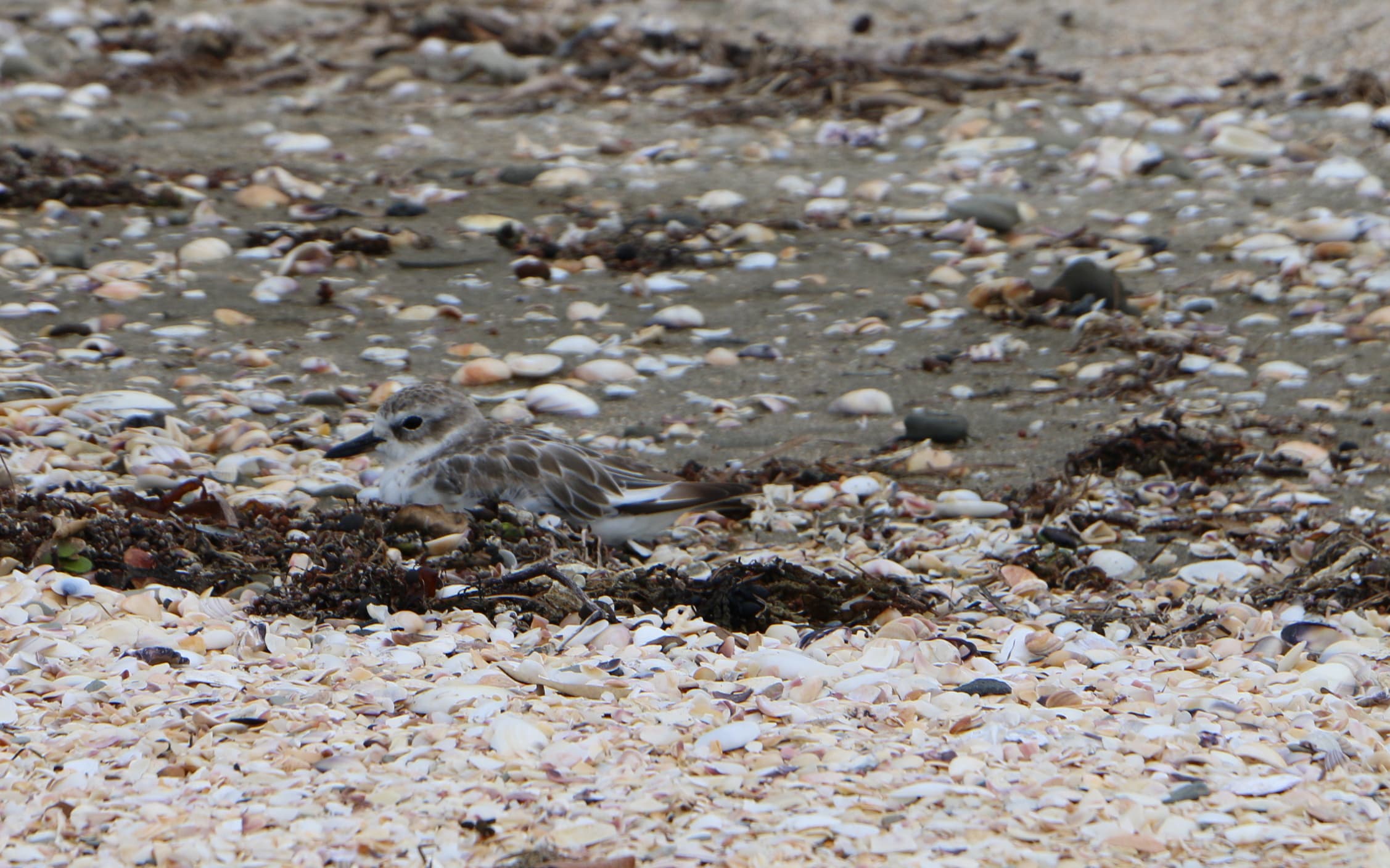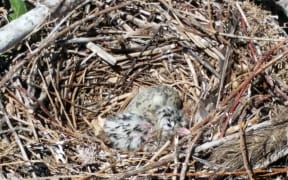Some New Zealand dotterel nesting areas in the Auckland region have been badly affected by the storms and king tides that hit the upper North Island earlier this month.

A dotterel in the shells and sand at Te Haruhi Bay. Photo: RNZ / Sarah Robson
But in areas where the breeding season started earlier - beating the storms and the crowds of beachgoers - record numbers of the endangered shorebirds have fledged.
Five pairs of dotterels nest along the one kilometre stretch of sand at Te Haruhi Bay, nestled at the end of the Whangaparaoa Peninsula in Shakespear Regional Park.
But ranger Matt Maitland said this summer has not been the most successful breeding season. Twenty-five eggs were laid across five nests, but just six chicks fledged.
Part of the problem has been the timing of higher than usual tides and stormy weather.
Mr Maitland said that was not helped by where the dotterels decide to build their nests on the beach.
"They come and create a scrape on the ground and lay their eggs there. That can sometimes end up being very, very close to the tide, because they might start the nest at a small tide range and then the tides increase, particularly when we get these super or king tides coming through."

The dotterel nesting area at Piha. Photo: RNZ / Sarah Robson
Mr Maitland said they have been doing what they can to protect the nests.
"When the water is higher, and you get a bit of a swell running, it creates a surge up, which can wash out the nest.
"Often our volunteers will get involved in sandbag duty, to try and protect the nests."
But that's not always successful.
Mr Maitland said there have been occasions when the sandbags have been removed by beachgoers, or they have simply been overwhelmed by water and the nests have been inundated.
Scandrett Regional Park, near Snell's Beach, also suffered significant damage during the early January storm.
Auckland Council dotterel expert Ben Paris said because the dotterel population there started breeding later, the chicks were not big enough to be able to hide out of the reaches of the high tides, or the eggs could not be moved.

A dotterel at Te Haruhi Bay. Photo: RNZ / Sarah Robson
But it was a different story further north, at Tawharanui, where the dotterels started breeding earlier, beating the crowds of beachgoers and the storms.
Twenty-three chicks fledged and two more are almost there, from 16 pairs of birds, making it the best breeding season on record at Tawharanui.
There was also some good news over on the west coast.
Mr Paris said the birds have not usually nested on the black sand surf beaches.
"Slowly over the last couple of years, at Whatipu, Karekare, Piha and Bethells, we're seeing them pop up."
At Piha, a pair of dotterels have made an unlikely home on a flat area of sand near a small stream - in an off-leash dog exercise area.
It was not the easiest place for them to raise their young - one chick was attacked and killed by a dog earlier this month.
And Mr Paris said there were other challenges to contend with when they were trying to protect the nests.
"It's the wild, wild west out here, so you get pretty wild weather when the storms come through, you can't just put up a little bit of tape and a signpost because it will just get blown down."
Despite the odds seemingly being stacked against them, two chicks have successfully fledged at Piha this summer.
That was thanks, in part, to the work of a couple of volunteer dotterel minders.
One of them, Sean Mackenzie, explained what's involved.
"A lot of stress at times," he said.
"You see them when they first hatch, they're tiny, it's like a little cotton ball with two toothpicks sticking out the bottom. They're running along and you see how fragile and precarious the area is for them."
Nationally, the dotterel population is heading up over the 2000 mark, which was heartening, Mr Paris said.
While they were mostly found in the Auckland and Coromandel regions, as the population expands, they were being found on shorelines further south.
People visiting beaches where dotterels nest should give the birds plenty of space, and keep clear of taped off areas. Dog owners should steer well clear and keep to the wet sand.





